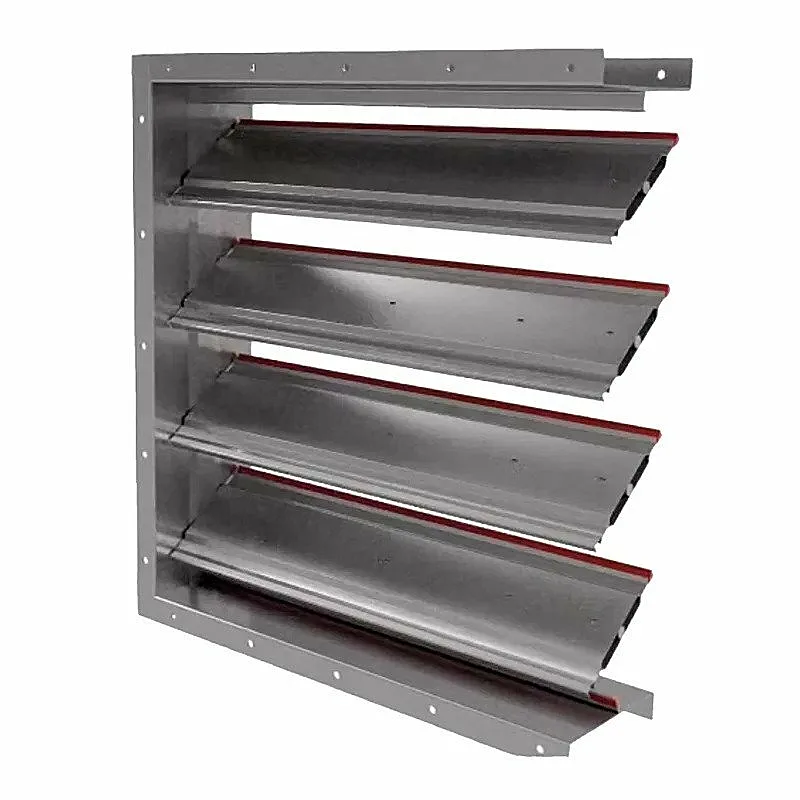Fire safety is a critical concern in every building, from residential homes to commercial establishments. Fire dampers play an essential role in slowing the spread of fire in commercial HVAC systems. As such, regular fire damper inspection is a requirement.
This article will delve into the specifics of fire damper inspection requirements, how to test fire dampers, how often fire dampers need to be inspected and tested, and why fire dampers help to protect people and property.
The Purpose of Fire Dampers
A fire damper is a device installed within an HVAC system to slow the spread of fire through the penetration of a fire-rated barrier. Fire dampers are essential in maintaining a wall assembly’s fire rating, specifically where ductwork penetrates the wall. When a rise in temperature is detected, the damper automatically closes, and seals off the duct at the barrier penetration, in order to curb the spread of fire.

Fire dampers come in many different designs. Most types of fire dampers use a heat-sensitive fusible link that melts when exposed to high temperatures. The fire damper closes when the fusible link is activated, either through the force of gravity or via a spring or other energy source. The fire damper remains closed until it is manually reset.
Ensuring Safety and Compliance
The value of fire damper inspection cannot be overstated.
Regular inspections ensure that fire dampers function correctly during a fire. Regular inspections also ensure compliance with various building codes and insurance requirements, to minimize the risk for all involved parties. Regular inspections ensure that life safety equipment will function when needed.
Fire Damper Inspection Requirements
Fire damper inspection requirements are primarily governed by the National Fire Protection Association (NFPA). According to NFPA 80, fire dampers should be inspected one year after installation and then every four years thereafter for buildings other than hospitals.
This requirement differs for fire dampers installed in hospitals. Hospitals successfully petitioned the NFPA for a longer inspection interval by providing evidence that six years was still sufficiently often for inspections, instead of the standard four years. They successfully argued that more frequent inspections are too disruptive to the hospital’s operations. Now, fire dampers in hospitals require inspections every six years, instead of four.
An inspection involves visually checking the damper, testing its operation, and inspecting associated components like the fusible link. Any problems detected during an inspection should be addressed immediately to ensure the fire damper responds quickly and effectively.
How to Test Fire Dampers?
Fire damper testing is a crucial part of the inspection process. During an inspection, the physical condition and positioning of the damper are checked. This involves simulating the conditions under which the damper should operate, to ensure that it can effectively close at the first signs of a fire.. This process is known as a “drop test”, which refers to the “dropping” of a curtain fire damper blade. This test applies to all fire dampers.
The drop test involves the following steps:
- Check the damper for signs of obstruction or damage
- Manually trigger the damper to ensure that it fully closes
- Inspect the fusible link to ensure that it's in good condition; replace if needed
- Reset the damper to its normal operating position after the test
Fire damper testing requires a thorough understanding of the damper's operation. Testers must verify that the damper closes fully, quickly, and without issue; as it would need to in the event of a fire.
Record keeping is another essential aspect of fire damper inspections. Each damper test should be recorded with notes and times of when the damper was tested and the outcome of the test. Record keeping helps ensure that the building’s fire safety system is compliant.
How Often Do Fire Dampers Need to Be Inspected?
The frequency of fire damper inspection is crucial for ensuring that they function properly when needed. As mentioned earlier, the NFPA requires fire damper inspections one year after installation, then every four years for buildings other than hospitals. Fire dampers should be inspected every six years for hospitals.
It’s advisable to conduct inspections more frequently if your building is in an area prone to natural disasters, or if the HVAC system is subjected to heavy usage or harsh conditions.
Choose AWV for Your Fire Damper Needs
AWV has been a trusted name in airflow management solutions for over a century. We offer a comprehensive range of fire dampers that are designed to meet diverse needs and built to the highest quality standards.
At AWV, we understand the critical role fire dampers play in passive fire protection. We are committed to helping you ensure that your fire dampers are ready to perform when needed most.
Choose AWV for your fire damper needs. Our experienced team is well-versed in NFPA guidelines. Ensure your fire dampers are compliant and designed to stay in optimal working condition. We can help.
Contact our team of fire damper experts today. Let AWV help you with your building's safety and compliance!


